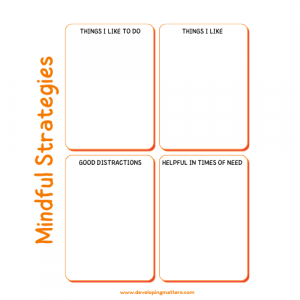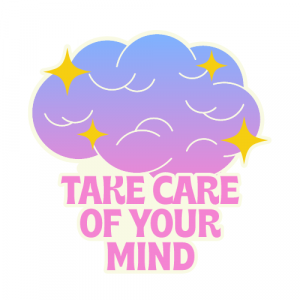A Mindful Strategy List for Children and Young People
The best way to live more mindfully, help settle the busy mind, calm the fight/flight/freeze response, and help stress levels is by giving ourselves time to have some mindful moments in our day. The following information will help you to create a mindful strategies list with your child, or they can create their own and you can make one for yourself as well (as a parent or a teacher). Developing strategies together, and adults modelling this to young people will help mindful strategies to be embedded into someone’s routine more effectively.
Knowledge gives our brain power! I teach young people all of the time about several topics about the brain, thoughts/feelings/behaviours, mindful living and our triggers and choices. Once we are aware of our own mind at a deeper level of understanding, we can begin to observe ourselves and our children more mindfully and find individual strategies to help in times of need, as well as settle the mind and central nervous system during the busy day.

Creating a mindful strategy list using four different sections, some strategies may be in more than one box.
“Things I like to do”… These strategies are hobbies or activities they like to do and they are very important to remember to fit into our busy schedule and give us things to look forward to.
“Things I like”… Children usually think of objects, foods, and activities but encourage them to also think of things that invoice using their senses, such as their favourite smell.
“Good distractions”… depending on their age, young people may know their distractions, such as putting music on to feel better. For younger children distractions are good if they need to self-regulate or distract from a bad feeling such as someone making them laugh, or doing a task to take the focus off a big thought or feeling until they can face things again.
“Helpful in times of need”… When your child has been triggered and needs help, encourage strategies such as talking to someone.
Here are some examples starting points for your child’s list(s):
- Mindful moments (looking up at the sky, noticing the environment, focusing on an object).
- Mindful movement (stretches, breathing through movement, walking).
- Physical activity (any form of exercise for any length of time or intensity).
- Relaxation techniques (a short meditation, listening to music with eyes closed, sitting in a quiet space).
- Social support (who can they reach out to?).
- Sensory activities (activities that focus on using the senses brain rather than the thinking brain).
- Having a distraction (music, arts, TV, laughing).
- Talking to someone.
- BREATHING TECHNIQUES!

They all sound very simple but they all work! What you need to do is identify the specific activities and strategies your child. You can also create a list for yourself… my go-to is music, being outside, talking to someone and also 7/11 breathing. We are all individuals so our specific lists will be completely different. Here’s some additional information for you to think about:
Being mindful and aware:
When we are in fight, flight, freeze (see fight, flight, freeze blog) our minds are very busy and full of thoughts that might make it difficult to think straight. Coming out of the busy mind helps us to think more clearly and deal with the things that are worrying us. You can learn more about the busy mind in our next article.
Having a distraction:
This list could be very big and different for everyone. A distraction can be great to come out of fight, flight, freeze if appropriate at the time. So if it is to stop worrying thoughts then a distraction will work, but if someone is dealing with the event at that moment then distractions aren’t possible. A distraction from worrying can be music, being creative, being outside, a sport or activity, a hobby, laughter, watching a movie.
Learning and Educating:
The more we learn about the brain the more we can help ourselves and our young people when they need it. Educating our young people is also very important to how they understand themselves and the world around them. If it is not possible to verbally educate your child, then understanding it yourself; observing, supporting your child and modelling and doing strategies together is still very important. At Developing Matters CIC we have some courses, manuals and resources suitable for parent, schools and young people for learning about topics such as fight, flight, freeze wit
h lots of strategies and techniques as well, all shown in our blogs on our website.
Breathing techniques:
Our breathing changes when we are in fight, flight, freeze and sometimes does not go back to a normal or calm state. Breathing techniques give our bodies the time to settle the central
nervous system and be in a calm state, helping the brain to function better and making the strategies and techniques we use work more efficiently. It is important to work on breathing techniques over a period of time for them to work as they need to. With the learning from our courses and within our manuals and resources on our website there is information about breathing techniques and visuals to help you to do these at home.
Free resource…. Here is our Mindful Strategies List template for you to print off and use 🙂
